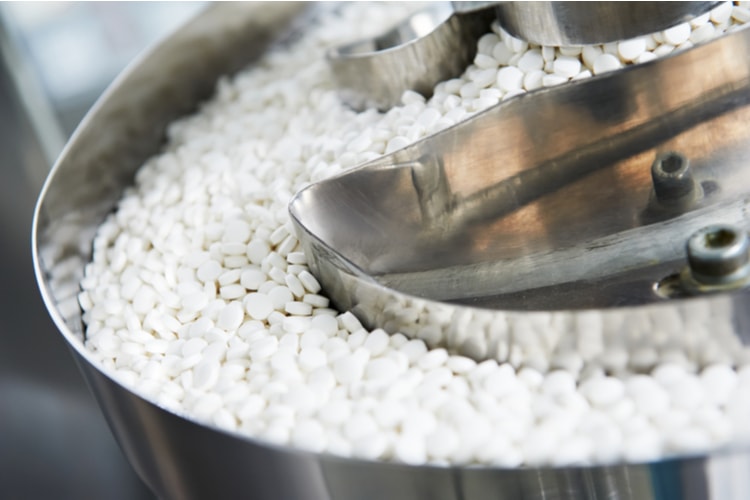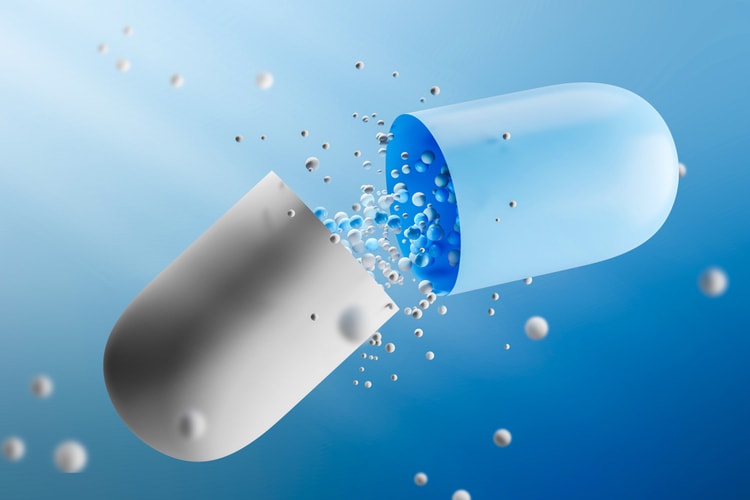A Guide to Mulitparticulates and the Developmental Role of PAT

To achieve multiple unit dosage forms (MUDF), also known as multiparticluates, starter pellets are drug-layered as an approach used in oral controlled release to provide benefits in formulation flexibility. An example of multiparticulates are minitablets in capsules containing two drug compounds with different release profiles.
With increased formulation flexibility, it is possible to achieve different release profiles such as immediate-release, delayed-release and sustained-release from a single dosage form, simply by changing the coating properties. Here are some of the therapeutic and manufacturing advantages of using multiparticulates in oral controlled release:
- Combinations of incompatible drugs are possible that would not be possible with other dosage forms, such as a single unit modified release systems (SUDF) used in capsules and tablets.
- Uniform drug distribution throughout the GI tract
- The ability to target different target sites within the GI tract for enhanced local action or systemic absorption
- Reduced risk of dose dumping and reduced GI irritation
- Opportunities for improved patient safety, compliance and therapy outcomes through more reproducible pharmacokinetic (PK) performance
- Ability to achieve low hygroscopicity, uniform shape, and a narrow particle size distribution (PSD) during the pellet manufacturing process
The best practice approach for multiparticulate success can be grouped into four categories: substrate, equipment, coating and process. This guide will start with the core and substrate selection.
The core is where the quality of a multiparticulate formulation and robust performance starts. Starting with the core, a drug layer is added followed by a seal coating, a functional coating layer, and lastly, an optional clear or pigmented protective coating layer. Uniform size and shape of the starting core allows a more uniform application of each subsequent coating layer. Therefore, an inside-out approach to consistency is taken.
What quality attributes of a starting core material are considered critical to success?
PSD is perhaps one of the most important quality attributes of the starting material. Changes in batch-to-batch particle size distribution contribute to changes in batch surface area, impacting controlled release coating layer thickness, that may potentially impact dissolution performance.
Changes in sphericity or morphology of the starting core can result in changes to the overall surface area of a batch, again potentially impacting film thickness and dissolution performance. Changes in sphericity may impact material flow within the fluid bed product chamber, particularly in the down bed direction. Decreases in sphericity may impact packing density and flow, causing sluggish bed movement, dead spots and ultimately changes in up bed density, which can lead to low coating process efficiency.
Friability of the uncoated core at early stages of the drug layering process will cause changes in the total surface area of the batch, and if severe enough, will result in changes in film thickness of any subsequently applied controlled release coating layer, leading to changes in dissolution performance.
Our best practice approach would suggest working to understand and control quality attributes as part of the specification and design a fluid bed coating process that avoids friability and attrition during processing.

What controls drug release from a multiparticulate to determine formulation performance?
Drug release occurs via diffusion through a semi-permeable membrane. Working from Frick’s law, the rate of drug diffusion is primarily controlled by two mechanisms, modulating film thickness or diffusional path length (denoted as h in Fick’s law) and can be controlled by altering the permeability of the coating with the addition of permeability enhancers, often referred to as pore formers.
Increases in film thickness are known to result in a decrease in drug release measured at a specific time point. However, consideration should also be given to the effect of the surface area. Examining the relationship of surface area to film thickness ratio and its subsequent impact on dissolution provides a greater understanding of the impact of surface area on batch-to-batch dissolution performance.
In addition, considering the effect of film thickness on drug release alone misses the complete picture. Fick’s law shows the effect of permeability or diffusivity of the coating being applied must also be considered. The addition of a more hydrophilic polymer to the semi-permeable coating increases the apparent permeability of the coating across a wide range of thickness from 2% to 20% weight gain. A similar effect is observed when the effects of the hydrophilic polymer on the diffusion coefficient is examined. As the percentage of the hydrophilic polymer is increased, so too does diffusivity increases.
The role of PAT in mulitparticulate development
Process Analytical Technology (PAT) can aid in the design of the multiparticulates before real-world execution in a lab. It is highly recommended at-line or in-line particle size measurement capabilities are employed to track particle growth as this is considered best practice.
Monitoring Critical Quality Attributes (CQAs) of incoming raw material is essential, as they have the potential to dramatically impact how the process will run and the end-result of the final product. Traditionally, incoming raw material CQAs are characterised, and provided they fall within a specific acceptable range, the process runs as per a standard definition.
PAT offers the ability to monitor CQAs like particle size and moisture content, in-line and in real-time, throughout the entire process. This allows for dynamic adaption of inputs rather than keeping them rigid, ensuring the best possible CQAs in the end-product.
PAT also aids in process understanding, whether parameters are adapted in real-time with an advanced control system or when implementing longer-term process control improvements. Ultimately, better process understanding leads to more robust, reliable processes, better yields, less waste, and reduced cost. PAT, good quality practices, and reliable raw materials all play into these benefits, as well.

Conclusion
Multiparticulate dosage forms offer formulation flexibility that contributes to patient-friendly features such as once-a-day dosing, improved swallowability and taste masking. Benefits from the manufacturer’s perspective can be seen in low hygroscopicity, uniform shape, and a narrow PSD during the pellet manufacturing process.
As outlined, achieving robust performance in multiparticulate formulation starts with the core. Building the active layer and functional coating layers on a consistent substrate is key to incorporating quality into a multiparticulate formulation. Using PAT like the Eyecon2 particle size analyser allows for the enhanced formulation and process insight need for robust performance.
Taking our best practice approach to multiparticulate development delivers opportunities to improve outcomes, speed up development and help to ensure robustness in both product and process.
For more information on PAT for multiparticulate development and control, get in touch!

